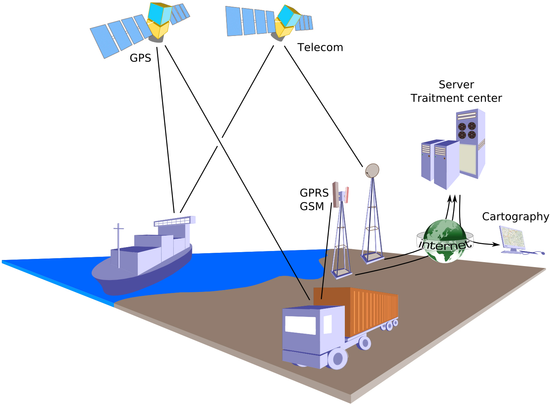Overview of Fleet Management Integration
The range of functions involved in fleet management are highly interrelated and generally integrated. While some services and products can be engaged separately, an overall system that integrates the data from various functions is required for optimal performance. Vehicle tracking systems provide a number of data points regarding engine diagnostics, driving behaviors, and geo-location. But there are a multitude of other data points outside of vehicle tracking systems that significantly impact fleet performance. Fuel transaction data, maintenance repair data, individual vehicle documents such as vehicle registrations, titles, and travel permits, supply chain data including vehicle and equipment specifications, warranties, build and delivery data, and vehicle identifying data, and driver-centric data such as acceptance of fleet policies, completion of required safety training, as well as demographic data on job types, all contribute to the fleet data pool. The more specialized functions a fleet performs, the more systems and data points are involved in integration.
Vehicle Tracking System
A key component in fleet management systems, is the vehicle tracking component. This component is usually GPS-based, but sometimes it can be based on GLONASS or a cellular triangulation platform. Once vehicle location, direction and speed are determined from the GPS components, additional tracking capabilities transmit this information to a fleet management software application. Methods for data transmission include both terrestrial and satellite. Satellite tracking communications, while more expensive, are critical if vehicle tracking is to work in remote environments without interruption. Users can see actual, real-time locations of their fleet on a map. This is often used to quickly respond on events in the field.
Mechanical diagnostics
An advanced fleet management systems (FMS) can connect to the vehicle’s onboard computer, and gather data for the user. Data such as mileage and fuel consumption are gathered into a global statistics scheme.
Driver behavior
Highly developed fleet management and vehicle telematics systems collect a full range of data in real-time and for transport and fleet managers. By combining received data from the vehicle tracking system and the on-board computer, it is possible to form a profile for any given driver (average speed, frequency of detours, breaks, severity of manoeuvres, choice of gears, etc.). This data can be used to highlight drivers with dangerous habits and to suggest remedial training applicable to the issues, or to ensure that drivers are meeting KPIs. Fleet management apps have shown to reduce driving incidents.
Geo-fencing
Many fleet management and vehicle telematics systems use geofencing to enhance asset security. Geofencing allows any internet-enabled device with a GPS or asset tracker application to set up a virtual boundary around a particular location using mapping technology. It also enables users to establish action triggers, such that when an asset enters or leaves the pre-defined boundaries, users receive an alert – either via text messages, emails, or push notifications.
Fleet management software
Fleet management software enables people to accomplish a series of specific tasks in the management of any or all aspects relating to a company’s fleet of vehicles. These specific tasks encompass all operations from vehicle acquisition to disposal. Software, depending on its capabilities, allows functions such as recording driver and vehicle details, the tracking of procurement costs, scheduling of maintenance and servicing tasks, import of fuel transactions, route optimization, and measuring of fleet performance via reports and charts.
Management of ships
Fleet management also refers to the management of ships while at sea. Shipping fleet management contracts are normally given to fleet management companies that handle aspects like crewing, maintenance, and day-to-day operations. This gives the ship owner time to concentrate on cargo booking.
Fleet security and control
Recent advances in fleet management allow for the addition of over-the-air (OTA) security and control of fleet vehicles. Fleet Security and Control includes security of the vehicle while stopped or not in operation and the ability to safely disable a vehicle while in operation. This allows the fleet manager to recover stolen or rogue vehicles while reducing the chance of lost or stolen cargo. The additional of Fleet Security and Control to a fleet management system gives a fleet card manager preventative measures to address cargo damage and loss.
Remote vehicle disabling systems
Remote vehicle disabling systems provide users at remote locations the ability to prevent an engine from starting, prevent movement of a vehicle, and to stop or slow an operating vehicle. Remote disabling allows a dispatcher or other authorized personnel to gradually decelerate a vehicle by downshifting, limiting the throttle capability, or bleeding air from the braking system from a remote location. Some of these systems provide advance notification to the driver that the vehicle disabling is about to occur. After stopping a vehicle, some systems will lock the vehicle’s brakes or will not allow the vehicle’s engine to be restarted within a certain time-frame.
Remote disabling systems can also be integrated into a remote panic and emergency notification system. In an emergency, a driver can send an emergency alert by pressing a panic button on the dashboard, or by using a key-fob panic button if the driver is within close proximity of the truck. Then, the carrier or other approved organization can be remotely alerted to allow a dispatcher or other authorized personnel to evaluate the situation, communicate with the driver, and/or potentially disable the vehicle

